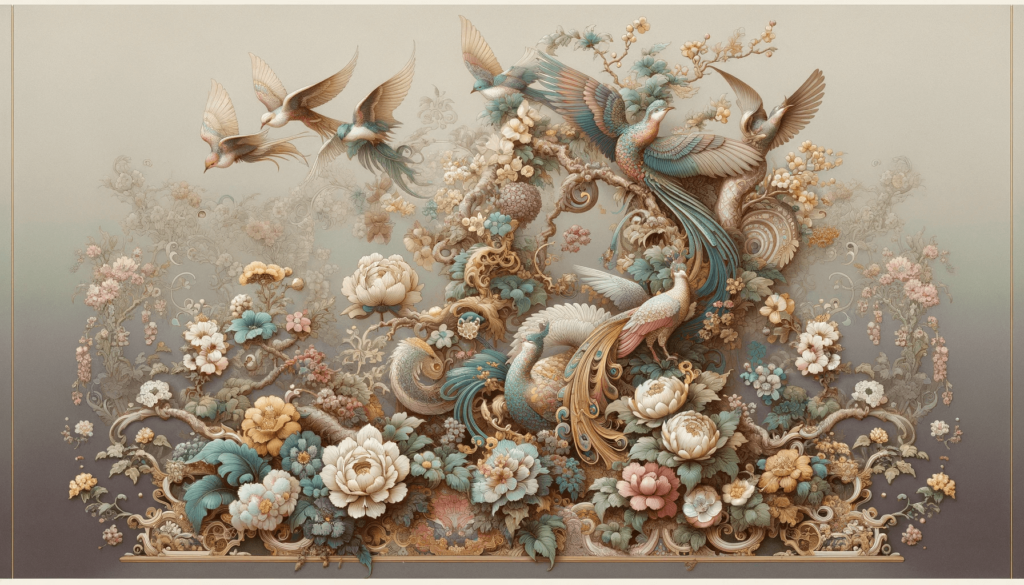
Have you ever stopped to admire a piece of artwork that’s so detailed and fine it almost looks like magic? That, my friends, is what we call delicate artwork. It’s like the artist used fairy dust instead of a brush!
This article is tailored for art enthusiasts, collectors, and students who appreciate the subtleties and nuances of delicate artwork.
Contents
Key Takeaways:
- Delicate artwork is all about fine details and gentle touches.
- It’s not just about being careful; it’s about expressing big ideas in subtle ways.
- Anyone can appreciate delicate art, and you might even try creating some yourself!
Understanding Delicate Artwork
So, what exactly is delicate artwork? It’s not just art that looks like it might break if you breathe on it too hard (though some of it does look that way!). It’s art that’s made with a lot of care, attention to detail, and, most importantly, patience. We’re talking about paintings with tiny brush strokes, sculptures that look like they’re made from spider webs, and drawings that have lines as thin as a hair.
Why Do Artists Go Tiny?
You might wonder why artists would choose to give themselves a headache by working on such detailed pieces. Well, it’s all about the challenge and the beauty that comes with it. Delicate artwork allows artists to show off their skills and create something that makes people lean in closer, squint their eyes, and say, “Wow, how did they do that?
It’s Not Just for the Pros
Here’s a little secret: you don’t have to be a professional artist to create delicate artwork. Sure, you might not start out making something museum-worthy, but with a little practice, you could make something pretty cool. It’s all about starting small (literally!) and paying attention to the little things.
The How-To of Delicate Creations
Getting Started
If you’re thinking of trying your hand at creating some delicate artwork, here’s what you’ll need:
- Patience: This is your most important tool. Don’t rush it!
- Fine tools: Think thin brushes, fine pencils, and maybe even a magnifying glass.
- A steady hand: Try not to drink too much soda before you start; jittery hands are not your friend here.
Techniques to Try
- Layering: Build up your artwork slowly with lots of thin layers. It’s like making a super fancy sandwich, but with paint or pencil instead of bread and cheese.
- Detailing: Focus on the tiny details that make your artwork unique. It’s the little things that count, like adding a sparkle to an eye or the veins in a leaf.
Bringing Delicate Artwork to Life
Here’s a fun table to get you started on your delicate art journey:
| Activity | What You’ll Need | Tips for Success |
|---|---|---|
| Miniature Painting | Tiny brushes, magnifying glass | Start with simple shapes and gradually add details. |
| Pencil Sketching | Fine-tip pencils, eraser | Use light strokes and build up the shading slowly. |
| Sculpting with Clay | Fine sculpting tools, clay | Work in a cool, dry place to keep the clay from getting sticky. |
Fun Fact:
Did you know that some artists create sculptures so small they can fit on the head of a pin? Talk about needing a magnifying glass!
Conclusion: The Big World of Small Art
So, there you have it, folks! Delicate artwork might be all about the small details, but it’s got a huge place in the world of art. Whether you’re admiring it in a gallery or trying to create your own tiny masterpiece, remember that it’s all about patience, precision, and a little bit of magic.
Who knows, maybe the next time you pick up a pencil or a brush, you’ll find yourself drawn (pun intended) to the smaller things in life. And remember, even if your first attempt isn’t perfect, it’s the tiny steps that lead to big achievements. Happy creating!
olympe casino avis: olympe casino avis – casino olympe
kamagra oral jelly: Acheter Kamagra site fiable – Achetez vos kamagra medicaments
vente de mГ©dicament en ligne: Livraison rapide – pharmacie en ligne pas cher pharmafst.com
kamagra pas cher: Kamagra pharmacie en ligne – Kamagra Commander maintenant
Cialis en ligne: Pharmacie en ligne Cialis sans ordonnance – Cialis sans ordonnance 24h tadalmed.shop
pharmacie en ligne: Achat mГ©dicament en ligne fiable – п»їpharmacie en ligne france pharmafst.com
Achetez vos kamagra medicaments: Achetez vos kamagra medicaments – kamagra oral jelly
Kamagra pharmacie en ligne: Kamagra pharmacie en ligne – Kamagra pharmacie en ligne
Kamagra Commander maintenant: kamagra livraison 24h – achat kamagra
pharmacie en ligne: Meilleure pharmacie en ligne – acheter mГ©dicament en ligne sans ordonnance pharmafst.com
kamagra gel: Kamagra Oral Jelly pas cher – kamagra gel